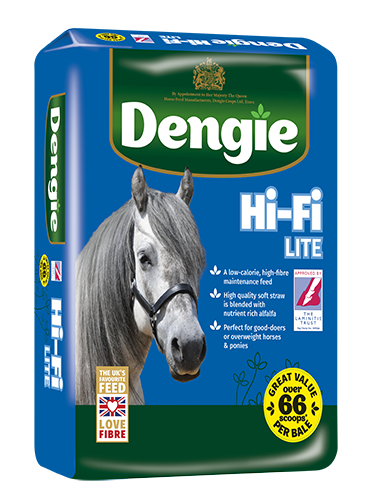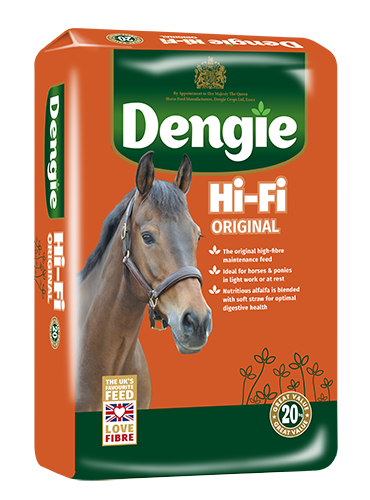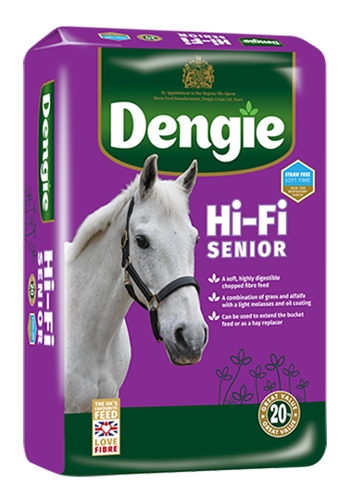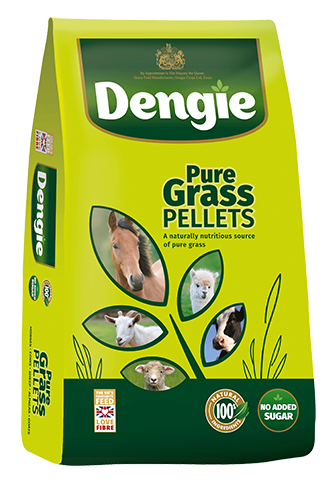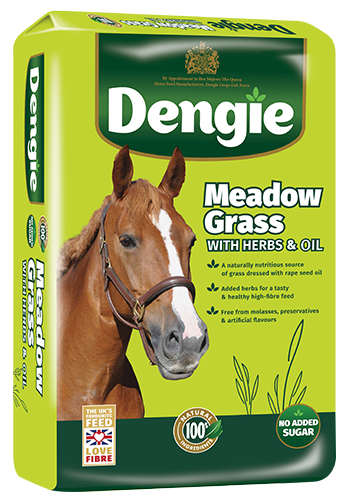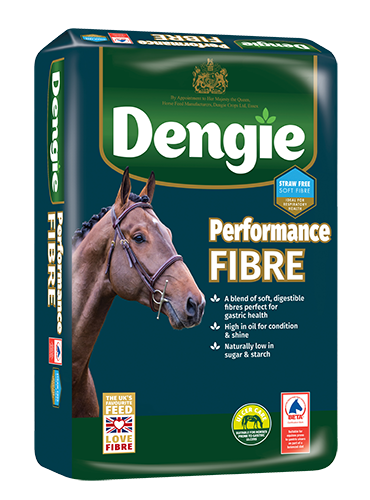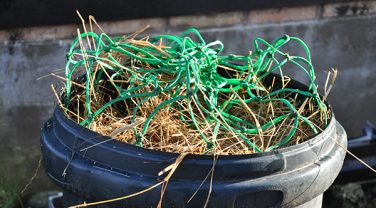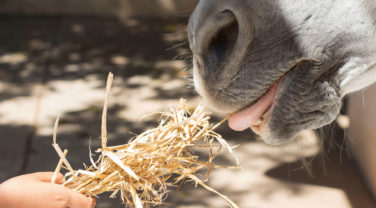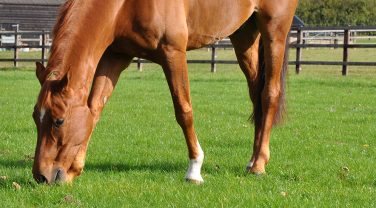
Forage Replacers For Horses
Why feed forage replacers?
Whilst many people will rely on hay or haylage to supplement their horse’s grass intake, there are some circumstances when a forage replacer for horses is a more appropriate alternative or addition. This includes for:-
Horses with poor dentition: It is not only older horses and ponies that can develop dental problems and issues like diastema, or gaps in-between the teeth. They are increasingly being identified in younger individuals too. Dengie has seen a 2.5 fold increase in the number of calls relating to dental issues in the last 10 years. In order to maintain fibre intake, horses with poor dentition need a forage replacer for horses that is easier to chew; initially this may be a short chop fibre feed, but longer term, an entirely soaked forage replacer will be required.
Lack of forage, or poor quality forage: The British weather is increasingly unpredictable. Over recent years there have been several instances of forage shortages in the UK which has meant that an alternative to hay or haylage is required. A forage replacer can help to make the usual hay ration last longer or totally replace it if required. It is also a good alternative when only poor quality forage is available which can be the case in years when the harvest season is very wet.
Variety in the diet: Offering a bucket or two of chopped fibre alongside the usual forage ration is a great way to keep your horse interested and encourage foraging behaviour. This is beneficial for all horses and ponies but may be particularly useful for those with limited appetites or fussy feeders where offering a variety of fibre sources may help to increase the overall intake.
Feeding Forage Replacers: What you need to know
- Not all feeds can be used as a forage replacer for horses – they must be high fibre and low starch, as well as being nutritionally comparable to forage to be acceptable
- Feeding insufficient forage replacer, and therefore fibre, in the diet increases the risk of digestive issues including colic and loose droppings. It is also likely to result in weight loss as well
- A minimum of 1.5% of bodyweight on a dry matter basis should be provided daily when totally replacing the usual forage ration. For a 500kg horse this is 7.5kg dry matter and given that many forage replacers are around 90% dry matter this equates as 8.3kg of forage replacer as fed (7.5/0.9)
- Forage replacers for horses can’t be fed in a net and instead should be fed in a large wide bottomed bucket. Putting a football or some large, smooth pebbles on top of the bucket can help to slow the rate of intake
- Like all dietary changes a forage replacer should be introduced gradually into the ration over the period of at least a few weeks. Once a forage replacer has been gradually introduced it is appropriate to leave larger amounts, as you would a haynet
Forage Replacer FAQs
Q. I have always been told to keep bucket feed size small. Is it safe to feed forage replacers in large amounts?
A. Yes, it is safe to feed forage replacers for horses in large amounts as you would a haynet. As with any change in feeding regime we would always suggest the gradual introduction of a forage replacer slowly increasing the amount used. Once a forage replacer has been introduced, try to divide the daily ration up so that your horse isn’t stood for long periods without anything to eat. It is safe to leave a larger amount for the overnight period as you would a haynet.
Q. I need to use an entirely soaked hay replacer ration. Can I soak several days’ worth of hay replacer at once so the yard doesn’t have to soak it when I am not there?
A. No, we would not advise soaking up more feed than is required for 12 hours. Once soaked, feeds can ferment very easily, especially in warmer conditions, which will make them unpalatable and they could cause digestive upsets. It is best to soak morning for night and vice versa.
Q. My horse needs a soaked forager replacer, but he eats it really quickly. How can I slow him down?
A. Unfortunately soaked feeds are consumed far more quickly than forage would be. Try to split your horse’s forage replacer ration up into as many meals as practically possible so that they aren’t left for long periods without anything to eat. Divide the forage replacer ration into multiple buckets in the stable to encourage foraging activity. Use very wide bottomed buckets to spread the forage replacer out more thinly so that the horse can’t take such large mouthfuls. Putting several very large, smooth pebbles that are far too big for the horse to consume within the bucket can mean that the horse has to work harder to lick the forage replacer from the bucket.
Q. My horse is out in a paddock 24/7 with other horses. As the grass is declining hay has been added to the paddock, but my horse can no longer manage to chew it. What can I do?
A. It can be challenging to supply a forage replacer for horses living out with others 24/7 but must be done particularly when grazing is in short supply. If your horse is used to living out with others as part of a herd, then bringing him in is likely to result in distress and potentially a reluctance to eat. The most practical alternative would be to electric fence off an area within the current paddock, preferably somewhere near to where the other horses are eating, so that your horse can have sole access to a suitable forage replacement. Once consumed your horse can be returned to the herd again to graze.
Q. This summer has been really dry and my horse’s grazing has disappeared. Can I supplement my forage with Dengie Pure Grass as a grazing alternative?
A. Yes, Dengie Pure Grass can be used to supplement your horse’s grazing. Once introduced gradually to the ration, simply leave a bucket or two of Pure Grass for your horse to graze on as desired. Continue to monitor your horse’s bodyweight to determine if the amount given is appropriate. If your horse gains unwanted weight, mix in or replace with a lower calorie forage replacer alternative such as Hi-Fi Lite.
Q. Do I have to dampen down the Dengie chopped fibre feeds prior to feeding?
A. Dengie’s range of chopped fibre feeds can be fed dry, but many people would dampen them with a little water prior to feeding which is also appropriate.
Q. Do all horses need extra forage in the winter?
In the wild horses follow a seasonal cycle of weight gain through the spring/summer and weight loss during the winter. In the domestic environment, winter weight loss is something we should try to encourage for overweight individuals as year-on-year weight gain is likely to increase laminitis risk. As a guide, by the end of winter ribs should be easily felt and just visible so that the horse can gain a little in the spring and summer without becoming overweight.
Winter grazing and conserved forage can still provide more calories than required for weight loss and so need careful management for those that are overweight or good doers. Strip grazing, use of a grazing muzzle if the grass is long enough, or turnout on a no-grass area such as a woodchip paddock can all help. Late cut hay that feels coarse and stalky is likely to be higher fibre and therefore lower calorie compared to one that is soft and leafy and is the idea choice for a good doer. If you don’t have the benefit of being able to choose your forage then replacing up to a third of the hay ration with straw is a great way to dilute the calories the forage is providing. This wouldn’t be suitable for horses with dental issues or those with a history of impaction colics but it is another useful way to reduce calorie intake whilst encouraging chew time for many horses and ponies.



